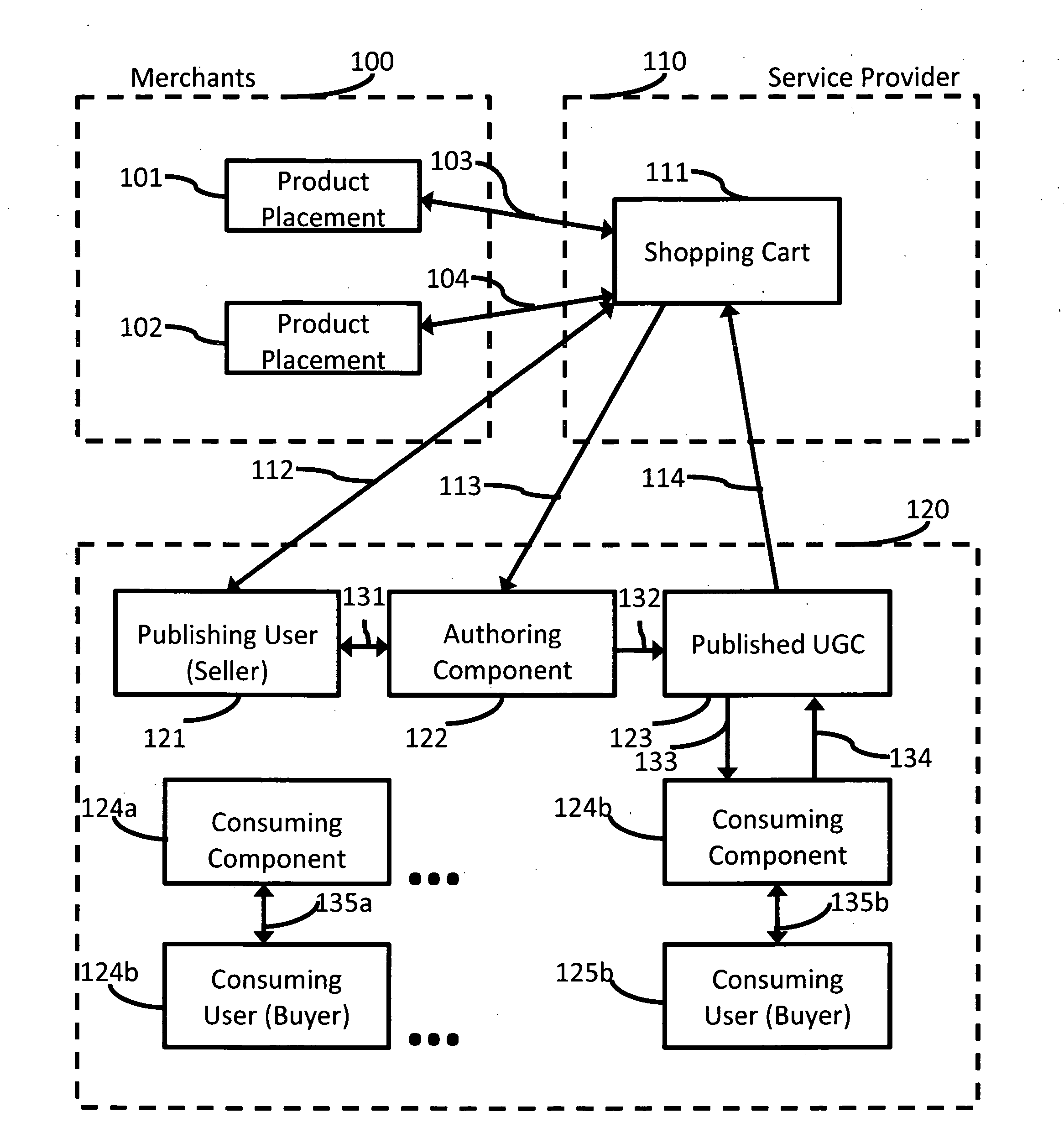Method and system for monetizing content
- Summary
- Abstract
- Description
- Claims
- Application Information
AI Technical Summary
Benefits of technology
Problems solved by technology
Method used
Image
Examples
Embodiment Construction
[0048]The inventors provide, in one embodiment, a system and a method for monetization of content in which endorsers are enabled to select from a variety of products (wherever products are referred to herein, it should be understood to include not only physical products, but also virtual products such as game items for online games, and services, without departing from the scope of the present invention), from a variety of merchants, and to make them available for viewing and purchase entirely within, or associated with, their own or another's content. That is, it is an object of the present invention that endorsers are able to choose product information about products of their choosing and to embed that information, in a variety of ways, into their own or another's content. “Content” as used herein should be understood to include any content capable of being associated with arbitrary additional content, either by having the additional content embedded within it or closely associate...
PUM
 Login to View More
Login to View More Abstract
Description
Claims
Application Information
 Login to View More
Login to View More - R&D
- Intellectual Property
- Life Sciences
- Materials
- Tech Scout
- Unparalleled Data Quality
- Higher Quality Content
- 60% Fewer Hallucinations
Browse by: Latest US Patents, China's latest patents, Technical Efficacy Thesaurus, Application Domain, Technology Topic, Popular Technical Reports.
© 2025 PatSnap. All rights reserved.Legal|Privacy policy|Modern Slavery Act Transparency Statement|Sitemap|About US| Contact US: help@patsnap.com



